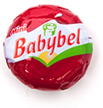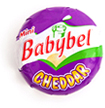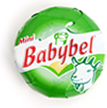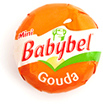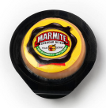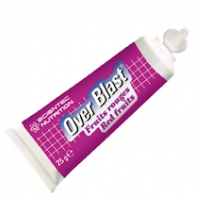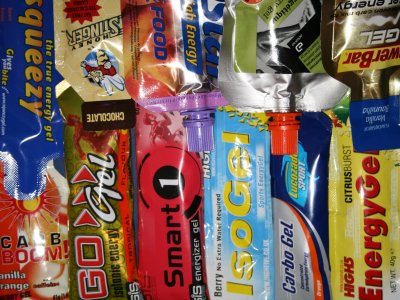When talking about sport nutrition, I sometimes get the feeling that I'm seen by some as an energy gel
aficionado. I can't deny that I've
tried and compared 21+ energy gels (and counting), nevertheless that doesn't mean I'm eating exclusively gels during ultramarathons (neither, to make things crystal clear, do I eat exclusively energy gels when
not running). In fact, I'm currently slowly taking my distances with the all-gel diet during ultramarathons.
A lot of runners on their first UTMB, including myself, have been be a bit surprised to find saucisson, ham and cheese amongst more typical biscuits, fruits and chocolate at the food stations. This is actually not as irrational as it could look at first.
In races up to marathon-type distance, most runners tend to privilege relatively fast acting energy sources,
ie. carbohydrates, that must be ingested frequently. The idea is to reduce the load on the stomach and to absorb only ready-to-use energy. A constant supply of relatively high
glycemic index (GI) food tends to reduce the usage of alternative sources of energy, such as fat, by the body. As a consequence, the blood sugar level is tightly linked to the food intake and any deviation in the eating pattern might lead to hypoglycaemia, from which recovery might not be quick nor easy. Nevertheless, given the relatively short length of a marathon, it is usually possible to keep to a decent eating pattern.
However, things are significantly different during ultramarathons for a number of reasons. First of all, it's much more
difficult to keep to a regular eating schedule for a variety of reasons, and in particular:
- lazy stomach due to poor blood flow, constant motion, and circadian cycle alteration
- loss of focus due to the duration of the event and lack of sleep
Secondly, runners might have to
carry a large amount of food if not fully supported, and most gels have a poor energetic density (energy-to-weight ratio). For example, I started with 4kg of food during my
attempt on the TSQ. This was composed of only 700g of gels, against 1,400g of chocolate/cereal bars and a significant 1,800g of cheese, bread, nuts, etc... The gels accounted for 17.7% of the total weight, but only for 6.9% of the energy! Conversely, the hazelnuts accounted for only 7.6% of the weight, but for 15.3% of the energy. And thirdly, in longer races,
energy is usually burned at a slower pace.
I have decided to compare 3 top-ranking gels (SiS Go, Torq, Honey Stinger) against 3 more traditional types of food selected by Leo for the PTL (Parmiggiano, saucisson, and peanuts), ordered in this table by decreasing energy-to-weight ratio:
| Name | Energy | Protein | Carbohydate | Sugar | Fat | Saturates | Salt |
| Unit | KCal/100g | % | % | % | % | % | % |
| KP salted peanuts | 590 | 27.5 | 9.9 | 5.3 | 49.0 | 8.8 | 1.3 |
| Parmigiano Reggiano | 390 | 33.0 | 0.0 | 0.0 | 28.4 | 20.8 | 1.8 |
| Mini Peperami (salami) | 379 | 25.0 | 1.5 | 0.0 | 30.0 | 12.3 | 3.6 |
| Honey Stinger | 324 | 0.0 | 78.4 | 78.4 | 0.0 | 0.0 | 0.3 |
| Torq | 253 | 0.0 | 63.9 | 21.3 | 0.0 | 0.0 | 2.8 |
| SiS Go | 130 | 0.0 | 32.8 | 1.5 | 0.0 | 0.0 | 0.0 |
1. Digestion speed
I think their is an advantage at privileging food that takes longer to digest, as this will ensure a more constant energy supply. A repetitive supply of fast assimilation food (sugar) is more risky, as a crash is likely to happen if you are not be able to eat properly at some point of the race. Proteins have a similar energy density than carbs but take longer to digest, because they must be broken down by enzymes. Fat also takes longer then carbs, as they need to be dissolved and broken down. Both can be used to balance the energy intake over time. On this front, parmiggiano, peanuts, and salami are clear winners.
2. Ease of digestion
The SiS Go are definitely the easiest food to digest, with Torq and Honey Stinger not far behind, although a bit too sweet to take more than two or three at once. Fatty food are a bit harder to digest.
3. Energy-to-weight ratio
There is a wide range of energy-to-weight ratios amongst the energy gels, ranging from a poor 1.3KCal/g with the water-packed SiS Go to a decent 3.24KCal/g on the sugary Honey Stinger. The bottom line using pure carbohydrates is 4KCal/g. Proteins also provide 4KCal/g. The only way to increase this ratio is to rely on fat, providing a great 9Kcal/g. And that is why nuts rank so high: with half of fat, they reach nearly 6KCal/g. Cheese and salami only do marginally better than the gels because the fatty energy boost is compensated by a higher water content. Obviously, as previously mentioned, olive oil and
lard being composed of 100% fat, they reach the highest edible ratio, with 9KCal/g.
4. Other nutrients
Nutrients might not be fundamental during a marathon, but the salt losses by perspiration can be great during an ultramarathon. It is necessary to replace them to avoid cramps and other body dysfunctions. Actually, I have a very common craving when running ultra, that is of a bacon sandwich. I assume this is the way for my body to tell me "I need salt, mate". Salt and other minerals are naturally present in traditional foods. Energy food users will find salt and other minerals in some gels, and in specific products such as SUCCEED and Perp.
5. Pleasure!
Eating gels for 30+ hours is not an option. At least not for me! I know some people managed to run the UTMB on gels and energy drinks only, but I don't think I could do it. A bit of solid feels good in the stomach and maybe even more importantly in the head. Unless my stomach is grumpy and the SiS Go gels would be the only option, there is no doubt that the parmiggiano and the sauccisson would be more attractive. This is worth considering in a context where eating might not be obvious and where anything bringing the mood up is welcome. Also, it is clear that food variety is equally important. I was a bit fed up with the peanuts-saucisson-parmiggiano trio diet towards the end of the PTL.
Now, all that is a bit of science, a bit of experience, and a bit of gut feelings (literally). Don't trust my conclusions. Try new running food, make your own decisions, and report them here!
Ultra food contest.
